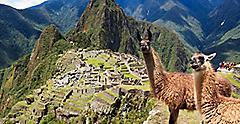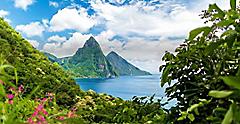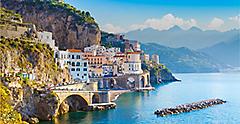
How (And Why) History Lovers Travel
History-minded cultural vacations take many forms, but architecture is an important element for nearly all of them. As you traipse through the streets of ancient Rome after docking at Civitavecchia, for example, seeing millennia-old structures like the Colosseum provides a real context for the tales you read about in guidebooks and on historical plaques. This is also true when it comes to more modern history: Looking westward from the balcony of St. Peter's Basilica in Vatican City allows you to grapple with the gravity of popes' pronouncements over the years.

What Is Cultural Tourism? What Are The Benefits?

What is cultural tourism, and how does it differ from historical tourism? Cultural tourism is when you travel specifically to learn about a destination's culture. While culture can provide a window into the distant past, it can also be totally modern, like video game arcades in Japan and Formula 1 race car tracks in Europe. More often than not, however, history lovers prioritize the cultural traditions of yesterday that have stuck around until today — and not just for great pictures or stories to tell their friends.
As a history buff myself, I can tell you it cuts much deeper than that. Using my cultural travels as a means to understand the ancient world helps me make more sense of my own life in today's world. Travel is all about expanding your horizons, whether that's seeing mountains taller than you could ever imagine or eating foods more delicious than you ever dreamed possible. The benefits of traveling with an eye for culture and history just expands this concept into another dimension: Time.
Anatomy Of An Attraction
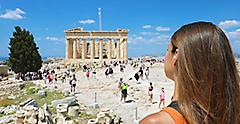
Deeper Look At Historical Vacation Ideas
While some travelers take historical vacations in pursuit of broader understandings, heritage tourism is also a great way to dig deep into specific cultures and civilizations. Visiting the ruins of Pompeii in southern Italy is like a living textbook. As you walk in and out of volcano-doomed homes, you can often see archaeologists dusting off mosaic floors, or collections of dinnerware and cutlery arranged atop stoves and kilns that have been extinguished for centuries. Even visiting places like this as a tourist can make you feel like you're part of a dig team.
Seeing world wonders also offers first-person insight into pressing historical questions, even if you sometimes find additional questions instead of answers. The Great Wall of China for instance looks easy for a modern army to breach, though when you consider the technology used to build it in the 3rd century B.C., it's easier to accept the wall (which is "great," even by today's standards) for the revolutionary construction that it is.
Other questions you ask might be broader than any particular historical event. If your ship docks in Barcelona, you might take a food tour to learn why paella recipes are so hotly debated or how eating tapas became a Spanish custom. Calling in Sri Lanka on your cruise, you might visit a spice farm to see how cinnamon or nutmeg grows, and why both were once highly prized treasures before they became ordinary pantry staples. Take a train to Nuwara Eliya, in the heart of Sri Lanka's tea country, and you'll be surprised to learn the plant is not indigenous to the island, in spite of how central it seems to its landscape.
History Isn't Always Ancient

Nature's Wonders Are Culture, Too
It's easy to think of history only in the context of what people have built. However, natural history can often be just as fascinating. For example, if your cruise stops in Cairns, Australia, you'll have the opportunity to snorkel or scuba dive at the Great Barrier Reef, where corals tell a story that stretches back thousands or even millions of years. Modern efforts to preserve this natural wonderland from climate change and pollution help to preserve that history for our descendants, too.
In the jungles of Costa Rica, on the other hand, you can drink in the sight of active volcanoes bubbling and rainforests strung with rope bridges. As you swim in the azure waters of volcano-heated Rio Celeste, particularly if it's not a very busy day, you might wonder how indigenous peoples even discovered such a place if they didn't know to look for it.
Another destination where culture mingles with natural history is Norway. The unique architecture and folklore of small villages within the country's finger-shaped inlets are directly linked to how difficult they were to access until about a century ago. As you sail through the fjords, either onboard your cruise ship or on a smaller excursion vessel, your guide may also explain to you how tsunamis within these waterways carved them out over the eons, and how these events (which would be considered catastrophes by today's standards) are part of the reason so many 21st-century travelers flock to Scandinavia.
Sail Through Time With A World Cruise
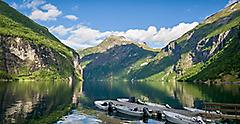

Get Royal Deals, Sign Up Today

Getting There
Explore Our Most Affordable Itineraries
Take a journey through history on the Ultimate World Cruise.

